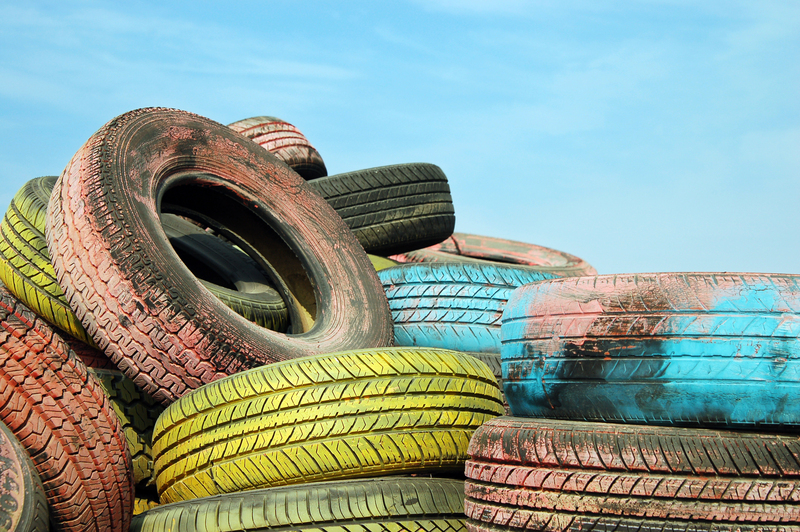How to Declutter Strategically with Hoarder Clean Up Techniques
Are you feeling overwhelmed by clutter and don't know where to begin? You're not alone. Millions of people struggle with clutter, and for some, it can reach the level of hoarding. While hoarding disorders require professional intervention, the powerful hoarder clean up techniques used by professionals can benefit anyone seeking to reclaim their space. In this guide, you'll discover how to declutter strategically using the same proven methods professional organizers apply in even the most challenging situations. Read on to transform your home--and your life!
Understanding Hoarder Clean Up Techniques
First, it's important to recognize what hoarder clean up techniques are and why they're so effective. Unlike traditional decluttering, which typically involves simply sorting through belongings, hoarder clean up methods are designed to tackle extreme clutter systematically, efficiently, and most importantly, compassionately.
- Holistic Approach: Treats the root causes of clutter, not just the symptoms.
- Structured Process: Follows a specific, step-by-step plan to prevent overwhelm.
- Emphasizes Safety & Health: Prioritizes both physical and mental well-being.
- Non-Judgmental Attitude: Encourages self-kindness and support.
These techniques are essential tools for creating a long-lasting clutter-free environment, regardless of your starting point. By integrating these principles, you can achieve a clean, organized, and peaceful space.

Why Strategic Decluttering Works Best
Decluttering randomly rarely leads to lasting results. Strategic decluttering means having a detailed plan, the right mindset, and clear goals. It's especially important when dealing with severe clutter or hoarding tendencies, as it keeps you from getting overwhelmed, making impulsive decisions, or giving up halfway. Here's why a strategy is vital:
- Saves Time: You don't waste effort moving things around without making progress.
- Reduces Stress: You're less likely to feel anxious or discouraged.
- Improves Safety: You avoid tripping hazards and potential health risks.
- Promotes Success: You create a sustainable system--not just a quick fix.
Step-by-Step Guide: Strategic Decluttering with Hoarder Clean Up Principles
Step 1: Assess & Set Goals
Before you touch a single item, perform an objective assessment of your space. Walk through your home and note which areas are most problematic. Ask yourself:
- Which rooms have the highest concentration of clutter?
- Where do I feel most stressed or embarrassed?
- What do I want this space to look and feel like?
Set realistic, specific goals. Instead of, "I'll clean the house," opt for, "I'll clear the kitchen counters this weekend." Professionals often use visualization techniques to keep clients motivated. Picture the clear, serene space you'll create.
Step 2: Assemble Supplies
Professional hoarder cleanup crews never arrive unprepared--and neither should you! Gather the following:
- Heavy-duty trash bags and boxes for donations
- Cleaning supplies (gloves, masks, disinfectant)
- Labels or markers for sorting
- Protective clothing if you expect hazardous clutter
Having your tools ready avoids unnecessary interruptions and makes the process safer and more efficient.
Step 3: Create Sorting Zones
One of the key professional hoarder clean up methods is to sort items into clearly labeled zones:
- Keep: Essential items you use and love
- Donate/Sell: Usable items you don't need
- Recycle: Items to be processed appropriately
- Dispose: Unusable, broken, or expired items
Resist the urge to create a 'maybe' pile! This only prolongs decisions and increases clutter anxiety.
Step 4: Start Small and Focused
Don't try to tackle the entire house in a day. Instead, use the "room-by-room method" favored in hoarder clean up. Begin with a manageable area such as a kitchen table, entryway, or bathroom counter. Success in a small zone builds confidence and momentum.
Step 5: Set Time Limits
Decluttering can be both emotionally and physically draining. Set a timer for 15-30 minutes, work diligently, and then take a break. This approach keeps clutter clearing from becoming overwhelming--a critical principle drawn from hoarding intervention techniques.
Step 6: Use the "Touch-It-Once" Rule
Professional cleaners use the touch-it-once principle: handle each item only once before placing it into a designated zone. This reduces indecision, speeds up the process, and avoids fatigue from excessive re-sorting.
Step 7: Prioritize Safety During Clean Up
Safety is paramount with severe clutter. Even in less extreme cases, cleaning can uncover dust, mold, animal droppings, or tripping hazards. Always:
- Wear gloves and a mask if dealing with old or unknown materials.
- Ensure good ventilation.
- Take extra caution with sharp objects or biohazards.
- If in doubt, call in professionals.
Step 8: Get Support When Needed
Dealing with a hoarded home or even moderate clutter can be emotionally difficult. Consider asking a trusted friend or family member to help. If the situation is severe or you feel unsafe, don't hesitate to hire a professional hoarder cleanup service. Support and accountability are often key to successful decluttering.
Step 9: Address Emotional Attachments
Many people, especially those with hoarding tendencies, keep items for emotional reasons. It's vital to:
- Give yourself permission to let go.
- Focus on keeping memories, not objects.
- Take photos of sentimental items before discarding them.
- Practice self-compassion--it's okay to struggle!
Step 10: Establish New Habits for Lasting Results
Decluttering isn't a one-time event. To avoid backsliding, implement strategies used by hoarder clean up experts:
- One-in, one-out rule for all new possessions.
- Regular "mini-declutters" every week.
- Store items vertically for better visibility.
- Keep flat surfaces clear.
- Maintain limits on collection types (e.g., books, clothes).
Common Obstacles in Decluttering--And How to Overcome Them
Anxiety About Letting Go
The thought of discarding items often brings anxiety. Try these techniques:
- Start with items that have no emotional attachment.
- Work alongside a supportive person.
- Remind yourself that you're making space for new experiences.
Overwhelm or Fatigue
Break big projects into tiny, manageable tasks. Celebrate each win, no matter how small! Remember that progress, not perfection, is the goal.
Skepticism About Lasting Change
The best way to build confidence is through consistent effort and maintenance. Review your progress visually--take "before and after" photos as professional hoarder clean up services do to inspire ongoing motivation.
Hoarder Clean Up and Sustainability
Decluttering responsibly is just as important as decluttering thoroughly. Here's how to prioritize sustainability:
- Recycle electronics, batteries, and hazardous waste at designated centers.
- Donate gently used items to local charities or community groups.
- Compost expired food and organic waste.
- Avoid adding to landfill by making mindful future purchases.
When to Call a Professional for Hoarder House Clean Up
If you encounter the following signs, consider reaching out for professional hoarder clean up help:
- Blocked exits, hazardous conditions, or pest infestations.
- Mold, rot, or strong odors.
- Physical or emotional distress during the process.
- Clutter preventing use of bathrooms, kitchens, or bedrooms.
Hoarder clean up services are experienced in handling these situations safely, efficiently, and empathetically. Seeking help is a sign of strength--not failure!
Success Stories: Real-Life Transformations
Many have used these methods to achieve remarkable change:
- Susan from Ohio: Regained her living room space after years of clutter, now hosts family game nights for the first time.
- Mike in California: Cleared out a hoarded garage, found valuable heirlooms he thought lost forever, and started a woodworking hobby.
- Lydia from Texas: With the help of a professional decluttering service, she downsized before moving, reducing moving costs and stress.

Top Tips for Staying Clutter-Free, Inspired by Hoarder Clean Up Pros
- Regular Check-ins: Walk through your home weekly and identify "hot spots."
- Designated Drop Zones: Assign places for daily essentials to prevent clutter pileups.
- Smart Storage: Use clear bins and labels to easily find what you need.
- Mindful Shopping: Bring home only what you truly need and love. Ask yourself, "Do I have space for this?"
- Community Giveaways: Offer unused items free to neighbors or community groups.
Conclusion: Take the First Step!
Whether you're facing a hoarder-style situation or just want to regain control, using systematic hoarder clean up techniques is the most effective way to achieve--and maintain--a clutter-free life. Start with a plan, enlist support, forgive yourself for slip-ups, and celebrate each small success. Your home is your haven--reclaim it, one item at a time.
Implement these strategic decluttering methods today. You'll be amazed at how much clearer your home--and your mind--can become with the right approach. Happy decluttering!